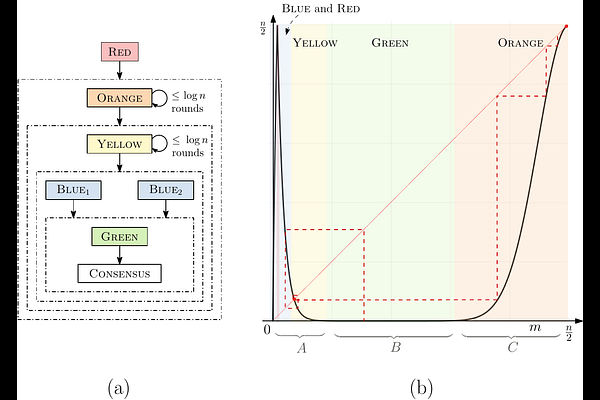The Minority Dynamics and the Power of Synchronicity

The Minority Dynamics and the Power of Synchronicity
Luca Becchetti, Andrea Clementi, Francesco Pasquale, Luca Trevisan, Robin Vacus, Isabella Ziccardi
AbstractWe study the minority-opinion dynamics over a fully-connected network of $n$ nodes with binary opinions. Upon activation, a node receives a sample of opinions from a limited number of neighbors chosen uniformly at random. Each activated node then adopts the opinion that is least common within the received sample. Unlike all other known consensus dynamics, we prove that this elementary protocol behaves in dramatically different ways, depending on whether activations occur sequentially or in parallel. Specifically, we show that its expected consensus time is exponential in $n$ under asynchronous models, such as asynchronous GOSSIP. On the other hand, despite its chaotic nature, we show that it converges within $O(\log^2 n)$ rounds with high probability under synchronous models, such as synchronous GOSSIP. Finally, our results shed light on the bit-dissemination problem, that was previously introduced to model the spread of information in biological scenarios. Specifically, our analysis implies that the minority-opinion dynamics is the first stateless solution to this problem, in the parallel passive-communication setting, achieving convergence within a polylogarithmic number of rounds. This, together with a known lower bound for sequential stateless dynamics, implies a parallel-vs-sequential gap for this problem that is nearly quadratic in the number $n$ of nodes. This is in contrast to all known results for problems in this area, which exhibit a linear gap between the parallel and the sequential setting.